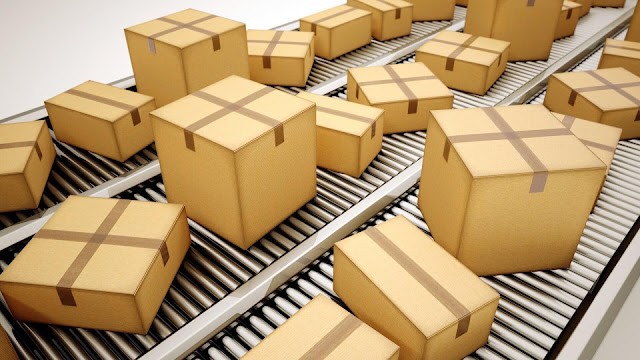The main objective of investing in the protective packaging in logistics is to guarantee the physical integrity of the products so that they reach customers in perfect condition. In just one operation, various types, formats and sizes can be used according to the need. Learn more about how important it is to operations. Importance of protective packaging in the life of a product
Although the
protection of products is the main function of protective packaging, it also
plays other roles, such as:
- accommodate the products properly;
- provide information about the items;
- generate consumer appeal.
Types of protective packaging in logistics
Primaries
This protective
packaging has direct contact with the item and protects it directly. This is
the case with the plastic that surrounds
a shampoo.
Secondary
They store primary protective
packaging and may or may not be
used for transportation. For example, this is the case with the cardboard box
surrounding a pack of medicines.
Tertiary
They group secondary protective
packaging and already have the role of packing the products for transport. A
large box containing a batch of several boxes of tea bags is an example.
Quaternary
They accommodate many
units and make handling and transport much easier. A pallet is an excellent
option.
Fifth Level
They generally aim to
transport over long distances, as with containers used in international
shipments.
Most used protective packaging materials in logistics and their indications
Cardboard
It is widely used to
transport dry loads that do not require special conditions (such as temperature
control).
Polystyrene
This type of protective
packaging is mainly used for
transporting household appliances, electronics and food and other
refrigerated products.
Plastic
Among the main
applications are protective packaging items that are not feasible to put in
boxes (such as car bumpers) and unitizing small loads, such as a bag of candy.
Madeira
The transport of fresh
produce is a good example, as well as loads that must be used but cannot
be opened, as in the
case of pallets.
Metallic alloys
Steel cans and
aluminum alloys are examples of this type of protective packaging, which can be
used to transport tools, and metal parts, among others.
Importance of protective packaging in logistics
In storage
Protective packaging
helps in stocking and moving products in the warehouse, protecting them from
damage that may occur internally. Therefore, it is important to observe the
capacity and possibility of stacking.
In moving and handling
Protective packaging
needs to be resistant and offers easy handling to optimize handling in the
various stages of the
logistics process.
Care in choosing the protective packaging
Product suitability
They must be designed
to take advantage of the space while being strong to protect the products. This
means that they cannot be too tight (at the risk of tearing) or too wide
(leaving the item loose and subject
to damage).
Environmental impact
Sustainability is an
increasingly demanded practice. The ideal is to bet on recyclable, returnable
or reusable materials.
Protective packaging costs
It is necessary to
balance the quality of the protective packaging with a satisfactory cost —
aiming not to make the operation too expensive —at the same time, resistance is
combined with the weight, which cannot be high, as this affects the freight
price.
Certification
Assessing whether the protective
packaging has Inmetro certification is essential. Through it, there is a
guarantee that the protective packaging can protect the goods from possible
damage.
Relationship between protective packaging, reverse logistics and
sustainability
Reverse logistics and
sustainability are two closely linked concepts. The reverse flow of products
and protective packaging helps to avoid excessive and inappropriate disposal of
materials in the environment and enables the use of recyclable and returnable protective
packaging.
Protective packaging as a logistical differential
When there is an
investment in innovative and differentiated protective packaging, the chances
of going beyond the customer's expectations are increased, offering something
extra — a practice called overdelivering. A good example is some cosmetics
companies that use glass protective packaging and other materials that can be
reused as a mug, for example, after the product runs out.
The choice of protective
packaging in logistics must be well thought out and balance several factors to
ensure a good cost-benefit for the operation. With the right investment, it is
possible to demonstrate the care with the products and, at the same time,
achieve customer satisfaction.
Did you like this
content? Then, share it on your social networks to let others know the
importance of protective packaging in logistics!

Comments
Post a Comment